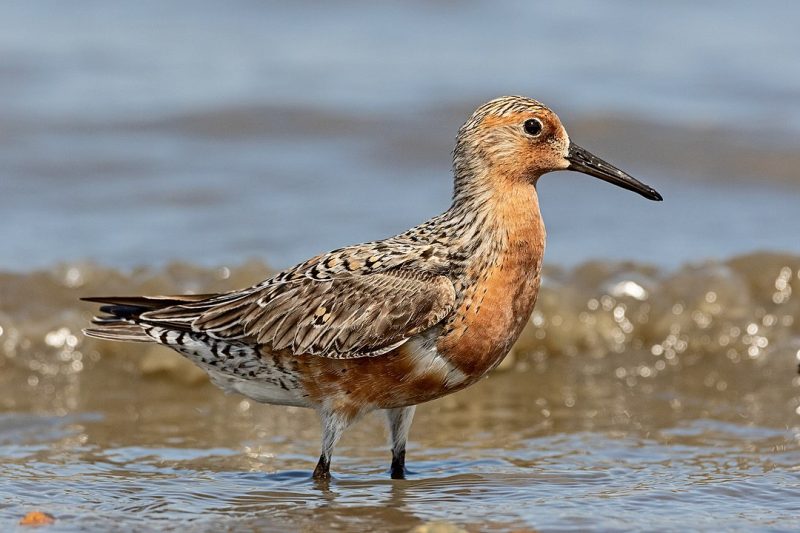
Which bird migrates the farthest?
The Arctic tern, an elegant white seabird, migrates farther than any other bird. It travels from pole to pole. It breeds on the shores of the Arctic Ocean in the Northern Hemisphere’s summer. Then it heads to the Southern Hemisphere to continue its life of endless summertime. This bird also sees more daylight than any other.
North American Arctic terns fly about 24,000 miles (40,000 km) each year. That’s a distance approximately equal to the circumference of the Earth (24,901 miles). An Arctic tern can live up to 30 years, so in its life-long quest for summer, it can fly 620,000 miles, or a million kilometers. That’s roughly three times the distance from Earth to the moon!


Other long-migrating birds
Some other long-migrating birds include the short-tailed shearwater, which travels 18,500 miles (30,000 km) from southern Australia to Russia and Alaska. The red knot flies 9,000 miles (15,000 km) from New England to far southern South America.

The bar-tailed godwit holds the record for longest nonstop flight. It travels 6,800 miles (11,000 km) from Alaska to New Zealand without any layovers. That’s remarkable endurance for what amounts to a nine-day flight.
And then there’s the wandering albatross. As the name implies, it’s not migrating as much as it is wandering. It spends most of its life aloft, circling the world over the oceans of the Southern Hemisphere. The wandering albatross might fly 18,000 miles (30,000 km) between breedings.

So which bird has the shortest migration? North America’s blue grouse lives in mountainous forests in winter, and then in the spring it descends almost 1,000 feet (300 m) to woodlands.
Bottom line: The Arctic tern is the bird that migrates the farthest. In its lifetime it can fly as far as three times the distance from Earth to the moon.
The post Which bird migrates the farthest? first appeared on EarthSky.
from EarthSky https://ift.tt/3aMUkEg

Which bird migrates the farthest?
The Arctic tern, an elegant white seabird, migrates farther than any other bird. It travels from pole to pole. It breeds on the shores of the Arctic Ocean in the Northern Hemisphere’s summer. Then it heads to the Southern Hemisphere to continue its life of endless summertime. This bird also sees more daylight than any other.
North American Arctic terns fly about 24,000 miles (40,000 km) each year. That’s a distance approximately equal to the circumference of the Earth (24,901 miles). An Arctic tern can live up to 30 years, so in its life-long quest for summer, it can fly 620,000 miles, or a million kilometers. That’s roughly three times the distance from Earth to the moon!


Other long-migrating birds
Some other long-migrating birds include the short-tailed shearwater, which travels 18,500 miles (30,000 km) from southern Australia to Russia and Alaska. The red knot flies 9,000 miles (15,000 km) from New England to far southern South America.

The bar-tailed godwit holds the record for longest nonstop flight. It travels 6,800 miles (11,000 km) from Alaska to New Zealand without any layovers. That’s remarkable endurance for what amounts to a nine-day flight.
And then there’s the wandering albatross. As the name implies, it’s not migrating as much as it is wandering. It spends most of its life aloft, circling the world over the oceans of the Southern Hemisphere. The wandering albatross might fly 18,000 miles (30,000 km) between breedings.

So which bird has the shortest migration? North America’s blue grouse lives in mountainous forests in winter, and then in the spring it descends almost 1,000 feet (300 m) to woodlands.
Bottom line: The Arctic tern is the bird that migrates the farthest. In its lifetime it can fly as far as three times the distance from Earth to the moon.
The post Which bird migrates the farthest? first appeared on EarthSky.
from EarthSky https://ift.tt/3aMUkEg

Aucun commentaire:
Enregistrer un commentaire